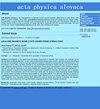计算纳米流体:非局部输运和玻璃化转变
Q4 Physics and Astronomy
引用次数: 3
摘要
纳米材料的性质与相应的体相有很大的不同。特别是,纳米尺度的孔隙或通道中的流体流动可能严重偏离宏观预期。当这种结构接近与分子尺度长度相对应的尺寸范围时,就会对流体的行为施加新的物理约束。这些物理约束导致流体的某些区域表现出新的性质(例如,孔壁附近的粘度大大增加),它们可能影响热力学性质的变化,也可能改变流固界面上物质的化学反应性。因此,许多经典理论都瓦解了,在如此小的长度和时间尺度上不再有效。超越经典(纳维-斯托克斯-傅立叶)流体力学模型的发展将对高度受限几何(通常为1-100纳米)中的流动的预测和理解非常有帮助。虽然这样的纳米级系统在实验上很难探测,但通过分子建模可以很容易地以非常严格的方式接近它们,为发现新现象提供理论和模拟机会。因此,我们在本文中回顾了广义流体力学框架内的进展,并提出了最新的理论发展和建模结果,这些结果最终可以导致能够准确预测纳米受限几何下流体关键物理性质的合适预测工具。[下一页继续]本文章由计算机程序翻译,如有差异,请以英文原文为准。
Computational nanofluidics: Nonlocal transport and the glass transition
Nanomaterials have properties that can be substantially different from those of the corresponding bulk phases. In particular, fluid flows in pores or channels of nanoscale dimension can deviate strongly from macroscopic expectations. When such structures approach the size regime corresponding to molecular scaling lengths, new physical constraints are placed on the behavior of the fluid. These physical constraints induce regions of the fluid to exhibit new properties (e.g. vastly increased viscosity near the pore wall) and they may affect changes in thermodynamic properties and may also alter the chemical reactivity of species at the fluidsolid interface. Consequently, many classical theories break down and are no longer valid at such small length and time scales. The development of models that go beyond classical (Navier-Stokes-Fourier) hydrodynamics would be very helpful for the prediction and understanding of flows in highly confined geometries (typically 1-100 nm). While such nanoscale systems can be very difficult to probe experimentally, they can be easily approached in a very strict manner by molecular modelling, providing theory and simulation an opportunity for the discovery of new phenomena. We therefore review in this article the advances within the framework of generalized hydrodynamics and present the latest theoretical developments and modelling results that can ultimately lead to suitable predictive tools capable of accurate prediction of the key physical properties of fluids under nano-confined geometries. [Continued on next page]
求助全文
通过发布文献求助,成功后即可免费获取论文全文。
去求助
来源期刊

Acta Physica Slovaca
物理-物理:综合
CiteScore
0.30
自引率
0.00%
发文量
0
审稿时长
>12 weeks
期刊介绍:
acta physica slovaca is an internationally recognised physics journal originally established in 1950. Since 1998 listed in Current Contents. Since 2006, acta physica slovaca publishes review and tutorial articles. Papers written by specialists in a given field are intended to be accessible also to non-specialists and PhD students. Although the printed version of the journal is available, all issues are free to download from the journal''s web page. We hope that the new issues of acta physica slovaca will be useful and interesting for readers.
 求助内容:
求助内容: 应助结果提醒方式:
应助结果提醒方式:


